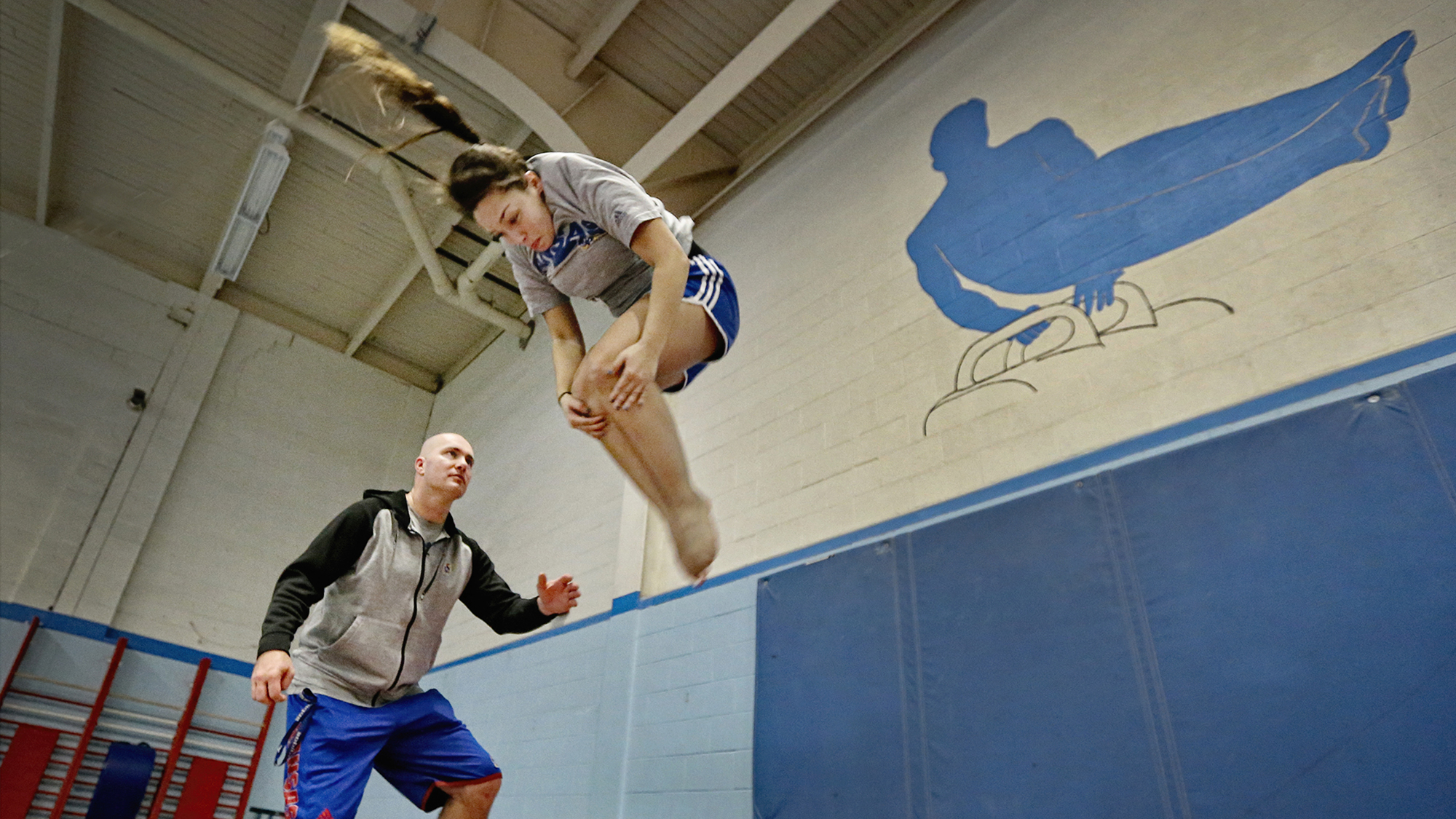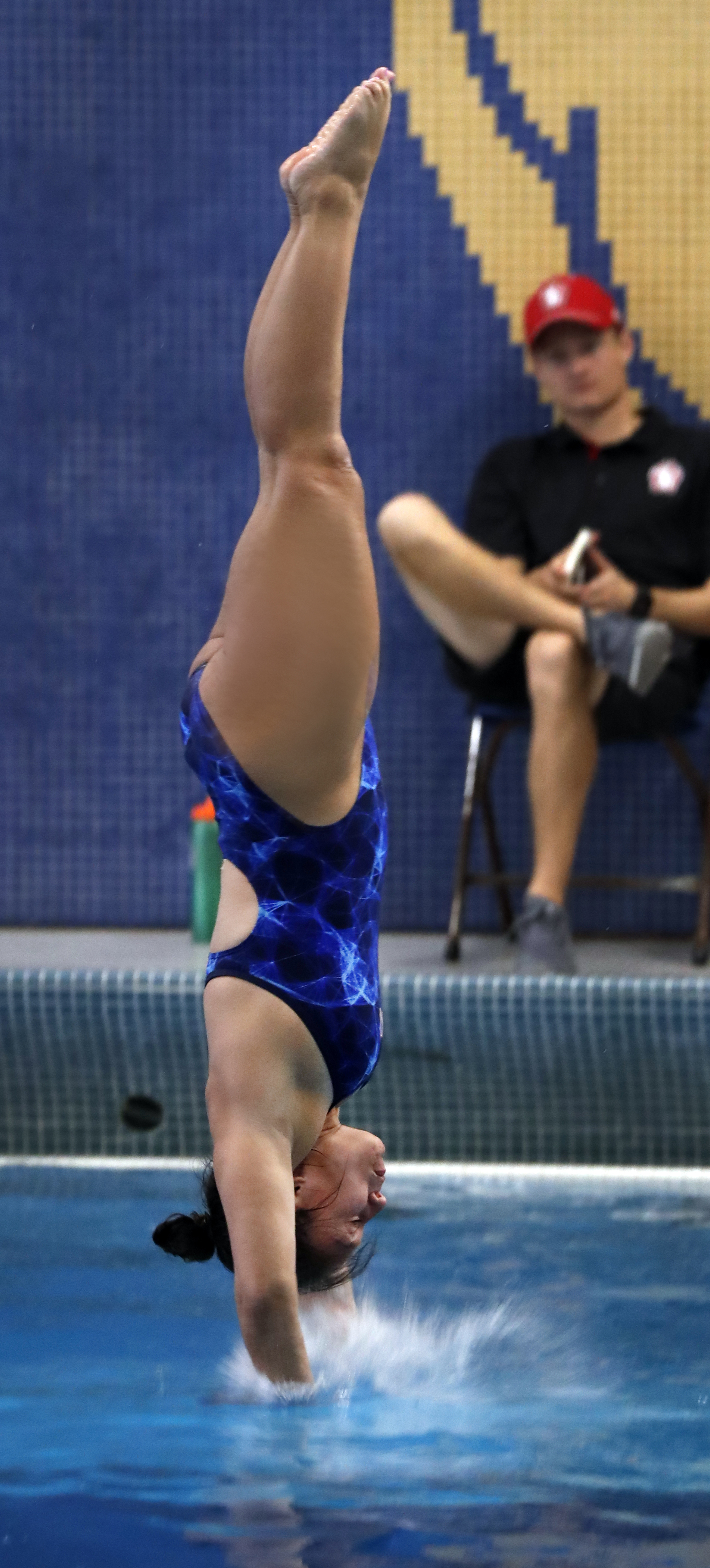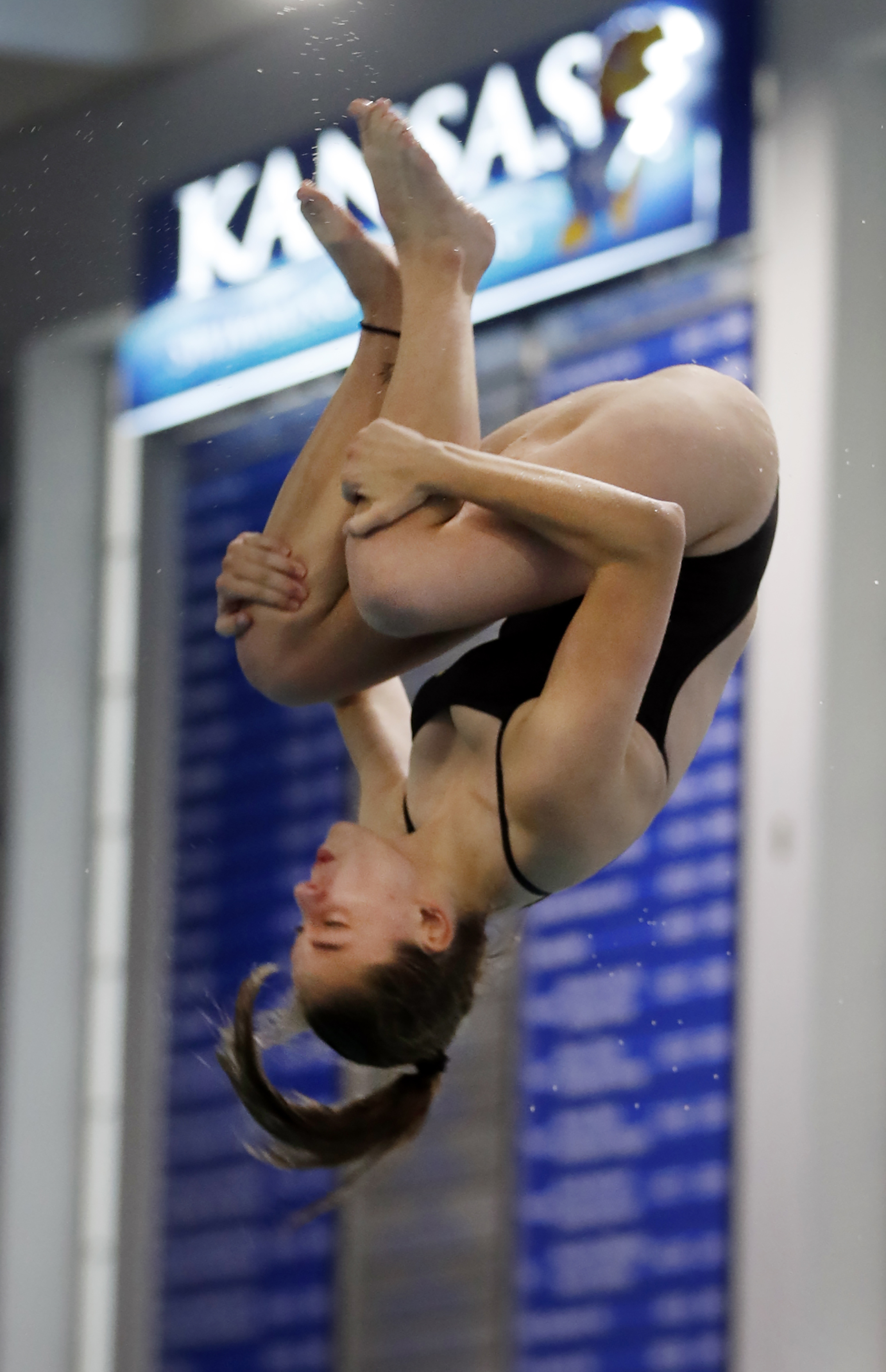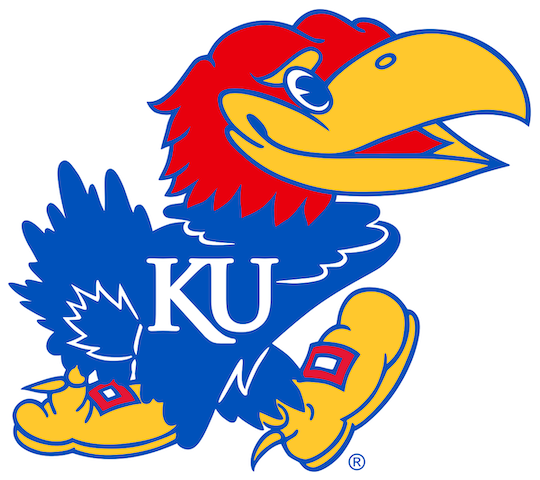RCW: Diving Dry





Diving is a unique way to provide spectators with an intricate way of what some may call, ‘falling with style.’ It is the ultimate water sport that pushes the limits of brilliance and beauty in just a quick couple of seconds. Not to mislead by the water-sport status, much of the training that a diver does actually happens out of the water.
But what exactly do divers do to incorporate all of the twists, turns and artistic flair that incorporate a dive? Divers use what is called dry-land training, where they are able to practice technical movements, along with strength and conditioning, in a setting outside of the water. Kansas diving coach Gabe Downey has learned through not only diving himself, but coaching, the importance of dry-land training for a diver.
“Dry-land is a good half of what we do, probably more,” Downey said. “We can focus on all of the details, and it is how we go about a good portion of our drills. We are able to focus on the flexibility, the tightness, the small movements, the technical details; all of the things that ultimately comprise the dives, but we can (also) break it all up and do it in a bunch of parts. The other part is the nature of being dry, we can go a lot faster.”
To create the environment, Kansas has been able to utilize space within Robinson Natatorium for the women’s diving team to push their abilities. They do so in a place where the athletes are able to work their bodies to understand how movement should properly feel and go, and mitigate injury. Downey has made it clear that he will implement dry-land to its full extent.
“When I was training, there wasn’t a lot of dry-land,” Downey said. “So something I knew when I began coaching club was that I had an opportunity to develop young athletes and improve what they were doing in a different way. I found, too, the more resources we have had and the more tools and better training we have done in dry-land; it sure helped — our college girls as well. So, in studying it, and following other programs, I have seen these improvements, but for us specifically it is fundamentally how we go about things. There are 100 ways to do it, (but) this is our way.”
Standing on the shoulders of what people did before, Downey is able to build off of the efforts that were done to the dry-land diving space in Robison Natatorium prior to him coming to KU. New modern grey walls with red trimming updated the color scheme along with numerous types of added equipment to the space.
Downey has been able to create a perfect training space for the diving team right upstairs from its pool. With limited training time each week the team wants to be efficient with everything it does. With the expansion of this upstairs dry area, the divers don’t have to wait to get in their repetitions.
“We have expanded to where we have four dry-boards, enough to not keep the five to six girls waiting on their turn to train,” Downey said. “(We now have) Three trampolines versus one. Again, they don’t have to wait. Because we have five sets of stall bars for core exercises and for technical analysis, they don’t have to wait. We have a full gymnastics floor. We have a rod floor and we have five different spotting belts. Most everybody is really happy to get one spotting belt, we have it set up to where each one of those belts teaches a different aspect of what the divers are working on. We catered the belts to be able to do that, (practice) every little detail. We have a full tower that they can practice whether it is for five-meter, seven-meter or 10-meter. And so they can practice their takeoffs and practice their finishes.”
Equipment like this is something that many people overlook when it comes to this sport. Because diving is technical, doing drills and work outside of the pool to replicate what they will be performing in the diving well is something that will boost a diver’s presentation, while mentally and physically preparing each one of them.
The team has also installed 20 TVs in its dry-land training area to provide the simple method of a visual example of what the actions they are doing look like. This goes beyond showing the side view of their dive, which is what a judge sees and will score the diver on in competition. Providing the divers a full visual of what they are doing on dry-boards, towers and on trampolines is key to success.
“Visual representation can be extremely helpful for a diver,” Downey said. “We were watching the Olympic Games while stretching the other day. And so they can see great versions of what they are trying to achieve.”
Senior Nadia Khechfe has been along for the ride of this major improvement to the Kansas swimming & diving program since her freshman year on the team and has had first-hand experience of what it is like to train both in and out of the water.
“When I found out (about) all the upgrading we were getting to the dry-land area, I was super excited,” Khechfe said. “I was mostly excited to have the cameras that record us which results in instant playback on the TVs. This is extremely useful in my diving because I can see exactly what Coach (Downey) is talking about when giving me feedback. The dry-land area we have is one of the best I’ve seen throughout my diving career. Coach put a lot of thought into exactly how he wanted it and so far it’s turned out great.”
Because every person learns differently, that is the beauty of having a space where the athletes can experience all the different methods of learning.
“It is not meant to be a one size fits all (place or area). Some people learn better from watching, some learn better from feeling, some learn better from hearing. Well, now we have it all,” Downey said. “They can do it mechanically in the belt, they can do it visually from the TVs, and of course they have constant feedback for auditory learning from the coaches and their teammates. They are all individuals and it is about giving them every tool to help them be successful.”
In diving, a typical tower setting in the pool is a five-meter tower, seven-meter and 10-meter. With the absence of both the seven and 10-meter towers in Robinson, the divers are able to practice what those dives would feel like in the belt system upstairs without having to fully initiate going into the water.
Sophomore Peri Charapich has been able to utilize this technique of dry training for tower on the blocks that Downey built for the team.
“It helps because we also have a belt on the tall part of it,” Charapich said. “We can do back two-and-a-half (somersaults) up there without having a 10-meter or even having to do it on (a or the) five meter for the first time since we don’t have a three-meter tower. It just helps you get comfortable with that.”
The effort that has been put in to making this space a prime location for the divers to train out of water has set the Kansas diving program apart from all of the other Big 12 Conference schools, and even other competitive diving programs across the country.
“We have one of the biggest and nicest, most-dedicated spaces in the country that I felt like was underutilized,” Downey said. “Well, it’s not being underutilized now. We have turned that into a real asset for us. We know, conclusively, that we have the best dry-land area in our conference. We have probably the best in our NCAA Zone and we have one of the best in the country.”
Many athletes look highly upon a strong set of equipment to be able to prepare themselves because they understand the importance of needing a space like that to excel and set themselves apart. Charapich came from a club team which did not have the space or opportunities, so this was very eye opening to her.
“When I came from my club team we didn’t even have any dry-land (training area), which was something I always wanted because I would see other teams and think about how that would help me so much to have that,” Charapich said. “You don’t have to get into the water every single time; so if you only have a short amount of time, like a class conflict, you can just come up and do a couple of jumps or flips, whatever you need, without having to get into the water and go through the whole process of that.”
For athletes who have been exposed to frequent dry-land opportunities it is very important to keep that consistency going for their bodies to maintain muscle memory and be comfortable with the proper steps. Because Khechfe came from a club team with dry-land space, it was important for her to continue that type of training.
“Dry-land is so useful in diving,” Khechfe said. “There are so many drills you can do to prep yourself for the water and make you comfortable before heading to the pool. Back at home, my club team does a lot of dry-land, where even some practices were just dry land.”
This setup is able to keep Kansas in a good position for recruiting new divers to join the team because of its impressive dry-land area.
“Thankfully the (Kansas) girls have done it, known it and have seen it. They understand what a difference it makes,” Downey said. “But for those who haven’t, oftentimes they walk in and it is (like) a kid in a candy store. They can’t even imagine all that they can do in that environment. So that is one of the main things that we make sure to show any athlete we are recruiting, what their opportunities are. We’ve got some new things that none of these girls have seen before. This is something we are going to be able to show off to them and make sure they know that some of these things nobody has ever done before.”
With this new innovative setup, the Kansas diving program is poised to launch into new levels of competition and achieve continued success.
“Last year, we had performances at Big 12s that KU hasn’t seen in almost 10 years,” Downey said. “And that is one of our biggest indicators to the effectiveness of our training. This year, every indicator shows me that we are probably going to be even better. We aren’t quite where I want (to be), but we are a heck of a lot further down the road.”
Thanks to Kansas swimming & diving’s dry-land training, that road doesn’t seem as long anymore. And with continued hard work there is no looking back.



